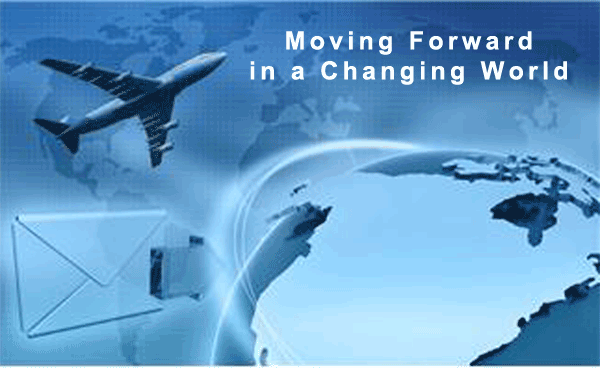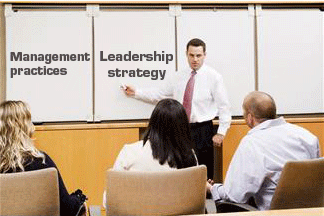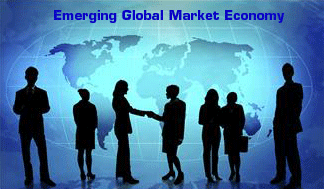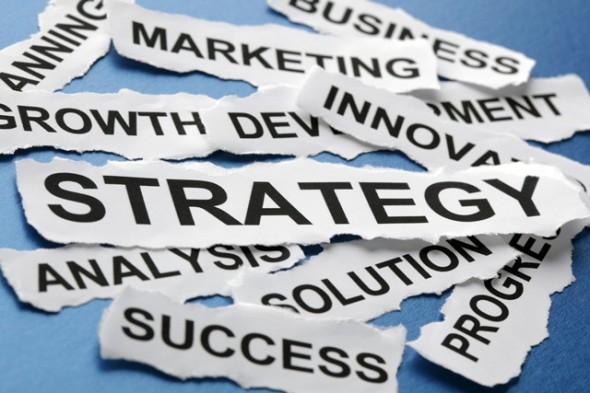Browse by Tag
- "Real" Innovation (2)
- Alignment (6)
- Business Innovation (9)
- Business Plan (2)
- Business Plans (1)
- Creativity (24)
- Critical Success Factors (4)
- Entrepreneurship (9)
- Global Competiveness (4)
- Human Side (11)
- India (1)
- Innovation (4)
- Innovation Consulting (18)
- Innovation Killers (3)
- Innovation Management (18)
- Innovation Tools (17)
- Innovation Training (24)
- Innovations (7)
- Inventions (16)
- IT Innovation (1)
- Leaders (5)
- Leadership (20)
- Leadership Development (13)
- Organizational Leadership (2)
- Organizational Strategy (20)
- Personal Values (6)
- Prediction (5)
- Strategic Innovation (38)
- strategic planning process (4)
- Strategy (3)
- Training (1)
- Vision (5)
- Weekly Dose (8)
Posts by Month
- 2014
- 2013
- 2012
- 2011
- 2010
- 2009
- 2008
- 2006
Should Higher Education Be Free? - An Extreme Innovation Challenge
 On September 5, 2013, Professor Vijay Govindarajan and I co-authored a blog about Higher Education for Harvard Business Review Blog website. To our surprise, it became one of the most popular blog ever. It reached over 225 comments in matter of few days.
On September 5, 2013, Professor Vijay Govindarajan and I co-authored a blog about Higher Education for Harvard Business Review Blog website. To our surprise, it became one of the most popular blog ever. It reached over 225 comments in matter of few days.
Obviously we struck a nerve. Why?
In the article, we suggested that the time has come for new business innovation models to fix the higher education system here in the US and across the globe. Here is the beginning of it:
-----------------------------
In the United States, our higher education system is broken. since 1980, we've seen a 400% increase in the cost of higher education, after adjustment for inflation -- a higher cost escalation than any other industry, even health care. We have recently passed the trillion dollar mark in student loan debt in the United States.
Read the entire article at Harvard Business Review >>>
Microsoft Innovative - YES according to AD in WSJ
Microsoft is famous for its back story of a couple of nerds who changed personal computing for the entire world. They went from a few thousand dollars in revenue to$70 billion in revenue each year. They must have been innovative to accomplish such a feat and have $77 billion in the bank. They just spent $7 billion of that hard earned cash to buy Nokia's Devices & Services business.
READ MY LIPS - WE ARE INNOVATIVE
Then, why did they have to point out not once, but twice about innovation in their full page ad on the back page of Section A in the Wall Street Journal? Here are the two quotes with emphasis and commentary added by me.
"By bringing together these great teams together, Microsoft will be able to deliver more choices and faster innovation to consumers in phones and smart devices of all kinds"
I thought a couple of years ago that Microsoft gave billions of dollars to Nokia and its CEO Stephen Elop (a former Microsoft executive) to accomplish the task already. Microsoft and Nokia were already joined at the hip as partners when Nokia gave up its own operating system in favor of Windows.
Staples has the "Easy Button." Perhaps, Mr. Elop has the "Innovation Button."
"Together, we will create more unified development, manufacturing, and marketing efforts to bring innovation to market with greater efficiency and speed."
The market did not think so, and erased 4.6% of Microsoft's share price after the announcement. That decline in share price pretty much wiped out the nice bump in Microsoft shares after CEO Steve Ballmer indicated he would retire within 12 months.
A THIRD EXAMPLE OF PUTTING YOUR MONEY WHERE YOUR MOUTH IS
Ballmer went on to say in a Wall Street Journal story on the same day,"For us to really fulfill the vision for what we can do for our customers, we have evolved our thinking."
Very recently Ballmer announced the "devices and services" approach at Microsoft after a major reorganization of the 100,000 person company (now 132,000 after Nokia acquisition). Sounds like he is going all in for devices. Other than the X Box gaming device, Microsoft does not have a successful record creating hardware. See Surface Tablet and Microsoft's recent $900 million write off for unsold inventory.
The Takeaway
You need an Innovation Engine to help create an ecosystem of innovation. You cannot decree it, you must work hard to create it.
Your turn. Tell me what you think. Please comment below.
- Does your business have a culture and climate of innovation?
- What is the most innovative new product or service your company has created in the last 5 years?
- Do you feel that Microsoft and Nokia can out innovate Google's Android platform and Apple's iPhone platform?
Moving Forward in a Changing World
Today's modern leaders need to be prepared to guide their organization's innovation efforts. In this global economy, how to begin and how to structure are big questions. How exactly does one assess innovation readiness and what qualities, values and competencies will drive future success?
Competing on price alone in the long and even short run, is a losing strategy. Today, there are no safe-haven sectors, every industry is being re-shaped, and new competitive advantages average three months. Macro trends of globalization and automation continually shorten life span for products and services. Nimbleness is lacking, strategic and annual processes are not working, and multigenerational talent gaps are widening. (chapter 2, Assess Innovation Readiness, Innovation Engine)

The disruptive result is the shift of power from the board room to the marketplace. Many authors and experts have pointed out this trend, yet traditional business models in the main, have not yet adjusted. Spend Shift describes a post-recession values-driven economy, concluding that consumer expectations and behaviors will drive business decisions.
John Gerzema and Michael D'Antonio's latest book, The Athena Doctrine: How Women (and the Men Who Think Like Them) Will Rule the Future, may give us some important insight into the skills, values and competencies of an ideal world leader, as identified through a two year study involving 64,000 people in 13 countries that comprise two-thirds of global GDP. It comes down it seems, to an array of desirable skills related to an emerging form of leadership arising in the business world - skills, traits, values and competencies thought of by the majority surveyed, as feminine traits.
While 81% said both masculine and feminine traits are needed to thrive in this world, the survey strongly revealed that both women and men are frustrated with the traditional masculine conduct and business structures they believe to be responsible for the financial global crisis. Globally, the feeling is one of cynicism overall, distrust particularly in financial institutions, and an overwhelming opinion (86%) that organizations have accumulated too much power. The world is more social, global, and interdependent. While traditional practices in business, education, and government are increasingly ineffective in today's emerging global community and markets, we are seeing successful, new approaches to business as "millennials" enter the workforce with values that are challenging and changing the status quo.
In the August 7, 2013, article/video entitled Athena in Pinstripes, John Gerzema makes two glaring points:
- There are still a very small percentage of women in the board room, yet women influence 80% of purchases
- A public company today focuses on shareholder value. The company of tomorrow will focus on employee value and community value, recognizing who actually creates value within an organization.
As John Gerzema reminds us, Peter Drucker once said, "The Only Purpose of Business is to Have a Customer."
Getting back to assessing and planning, in Innovation Engine: Driving Execution for Breakthrough Results, Jatin Desai, in Chapter 2, "Assess Innovation Readiness," states that, "Innovation, if done right, should be an input to strategic planning, not an outcome." Building a supportive climate and culture of innovation requires an evaluation of not only a firm's offerings, but also the intent, knowledge, quality and ethics of a company and the skill set and values of its leaders. The overall theme really needs to be one of engagement.
Innovation Engine addresses how to assess innovation readiness, the factors that must be examined, the questions that need to be answered, how to develop the competency for deep insights, the roles of external environment and internal employee engagement, and the overall alignment of success factors.
Unfortunately, "In most companies, future-related decisions are based primarily on use of historical data. Hardly anyone brings explicit data about the emerging needs of current customers or defines new opportunities for evaluation … in most cases, the process lacks the collective wisdom and knowledge of the entire organization at large. … it is assumed that the top team, albeit most distant from the front line, has the required knowledge about the ever-changing products, technologies, and issues. This is an orthodoxy that is rarely, if ever, challenged." ( Innovation Engine, Chapter 2, p. 39).
Past methods do not guarantee future success. The role of transformative leadership is crucial, as it sets the tone, dialogue and pace of an organization's strategy and execution. If dominant logic is stifling, a learning culture does not exist, or a firm's access and commitment to technologies and resources are lacking, ultimately innovation will not likely succeed. Regardless of how brilliant an idea may be, or how aggressive leadership and management, if the organization is out of step with the markets, trends, desires and values of its potential customers, there is no business.
The success of future leaders is not "men versus women" despite Athena's survey results of 66% of those agreeing the world would benefit if men thought more like women. Feminine qualities like collaboration, Intuition, patience, flexibility and loyalty were ranked high as key leadership qualities. So were masculine qualities such as decisiveness and resilience, along with neutral qualities including intelligence, candor and vision. It seems the message to CEO's from Athena and Innovation Engine is, from the beginning of the innovation process:
- be a better listener, be inclusive embracing diverse mindsets and points of view
- strive to continuously engage your customers, employees and communities
Innovation Engine puts forth a solid methodology for assessing, aligning, mobilizing and leading innovation which is comprehensive and inclusive from the start, emphasizing the importance of developing an innovation framework, organizational structure and momentum that begins, plays and continues with people, including and accommodating all stakeholders. This is the new direction of the world, and thus, everything in it.
The future is upon us. Meet it with an open mind.
" Bon chance mes amis."
U.S. Innovation Leaders need IQ, EQ & CQ (Part Two of "Judas Goats")
With the U.S. appearing to suck at globalization and largely indifferent but dependent on the domestic market, we need leadership willing to step up and innovate with a capital "I" if we intend to remain in the top 3. It can be done. We are still viewed as the country of freedom and ingenuity around the world, but more and more we are being viewed as resting on our past accomplishments and steering rudderless, albeit arrogantly, through cultural impacts we don't quite understand and don't appear to appreciate.
We Are All Connected - Domestically and Globally
If we figure the world will just accept us the way we are because we are America, we need to examine that attitude and quickly. How much time do you think the Chinese spend learning about America? Cultural impact in the U.S. from voting to job creation and economic recovery, affects us all within and without our borders, and domestic and international markets. We need capital "I" Leaders in the U.S. to embrace not only IQ and EQ, but also CQ (cultural quotient). Consider India; America by no means has an exclusive on innovation.
While JC Penney apparently embraced the risk side of innovation hiring Ron Johnson, at least they tried. Demographic differences between the loyal Apple consumers vs. loyal Penney consumers relied on an Apple innovation methodology that couldn't make the leap. Yet, JC Penney may still pull a "Coke" - to - "Coca Cola Classic" and now build on the needs and desires of their demographic strengths to bring back a new and improved "classic" approach. Finding the "classic" in emerging markets as well could be a significant and even sustainable coup. But to target effectively they need to know the markets and the cultures, and be set up to strike when the timing is right.
Leaders must move faster regardless of sector. Crowd sourcing like Twitter, makes the whims of the consumer more volatile than ever before, whether it's basics of life like food, or the latest smart phone. Share one weight loss recipe featuring a specific ingredient or nutraceutical; demand changes instantly and involves multiple markets and cultures.
As a leader, if you are acting as the "judas goat" still herding your company to a rigid, specific destination bogged down in status quo, it will be as sheep to slaughter.
What factors are the most critical for emerging achievers and leaders of today when they predict a future for themselves?
"Self-awareness, high intelligence, high emotional quotient, extremely high integrity, multiple discipline knowledge, voracious appetite for new knowledge." ~ Jatin Desai
Leaders need to loosen up and embrace the reality that "90% of what we call 'management' consists of making it difficult for people to get things done." ~ Peter Drucker
Need help developing a clear innovation strategy, penetrating emerging markets, leadership development? Visit The DeSai Group. Follow Jatin Desai on LinkedIn and Twitter for juicy innovation ideas and tidbits.
Jatin Desai CEO, and author of Innovation Engine (May 2013 release by Wiley International), addresses C-Suite groups, delivers keynotes, leads workshops and joins with corporations and organizations to design and implement innovation programs and optimize existing programs, in the USA and internationally. Innovation Engine is now available in digital and hardcover versions at your favorite retail online or brick and mortar outlet.

|
"Innovation Engine will help you build a climate and culture of innovation. A must-read for every serious executive desiring innovation as a daily habit in his or her organization and to drive innovation execution."
-Vijay Govindarajan, coauthor of the New York Times and
Wall Street Journal bestseller Reverse Innovation
.
Innovation USA - Leaders or "Judas Goats?" U.S. Leadership Please Step Forward
Innovation USA - Leaders or "Judas Goats?" U.S. Leadership Please Step Forward
Here in the USA the one question begging to be asked and answered is, "Are we simply sitting too comfortably where we are?" The up and coming countries and markets are busy manufacturing most of what we consume. While they are motivated, innovating and expanding, we are well - sitting.
Not only are many organizations still stuck in their chairs instead of examining the effectiveness and long term feasibility of status quo, but even worse, it appears that while a lot of lip service has been given to the term "innovation" action has been blatantly MIA.
Touting innovation officers, teams, strategy and even innovation "days," doesn't mean companies are actually engaging in innovation. Setting aside the publication of numerous books on innovation and the mention of the "I" word over 33,000 times in annual reports filed with the SEC, it appears likely that using the "I" word is mainly a ploy to convince investors that "change" is taking place, even though by self-admittance most executives concede their companies still haven't developed clear innovation strategies.
What does it take to initiate real change? What kind of intervention is necessary? Look at the complaining and excuses presented by US companies when challenged, such as:
- Our business is more complicated…
- We need less regulation…
- That's not how we do things…
- We can't afford to re-tool, invest in new tech…
- Our customers are happy the way things are…
We need to ask: "Really? No need to innovate?"
What about new markets, evolving customer needs and wants, trade deficit with China, run-away growth in world markets, stagnant growth in U.S. markets, and limited U.S. penetration of world markets? What about VISION for the future?
There is plenty of evidence portraying a very different picture and begging for leaders to step up to the task of implementing real innovation in U.S. companies, instead of just lip service.
Domestically, it's been said that while around 30% of companies think they have introduced a major innovation within the past 6-12 months, only 5% of consumers agree. Presently, for instance, the perception is Google is beating the pants off Apple with innovations and methodology - brilliant new stuff, like "Glass." Consumers want to be seen, heard, listened to, responded to and enticed with "new" - note the T-Mobile inspired discussion on contracts - finally.
While we sit in our big chairs at home focusing mainly on domestic markets in largely an unresponsive way, we are losing big in global markets. Director of Tuft University's Institute for Business in the Global Context, Baskar Chakravorti, recently released a paper detailing statistics and an argument as to why U.S. companies lag far behind in penetrating emerging markets.
Although American brands are ubiquitous abroad, U.S. companies actually realize only around 7% - 10% of their overall revenues from emerging markets. In 2010 those markets represented 36% of global GDP - why is U.S. share so small while our "global peer average [is] 17%" according to HSBC estimated revenues.
Perception is Everything . Real leadership is multi-faceted, and above all based on communication, concern and relationship with real people - domestically and globally, and within and without an organization.
The great "growth" chasm between West and East cannot be filled by just moving our manufacturing east, negatively impacting even more jobs in America. That only makes Americans in this already high unemployment climate, well, angry. Emerging economies are still the ever-growing elephant in the room. Could it be that many U.S. corporations don't really care about the needs of Americans as workers or consumers in spite of bail-outs?
The combination of continued job decline stateside, along with demand for low priced goods by consumers hit with shrinking wages, plus U.S. companies' addiction to cost cutting to raise the bottom line, may ultimately be our undoing. Additionally, complications like China's government control of their currency, seemingly gives the U.S. a lose/lose situation, while the 3rd largest economy in the world, China - has the largest population and largest potential market, in the world. The Chinese people won't indefinitely accept a lower standard of living. When do we get to sell to them?
What do U.S. Leaders need for success in domestic and world markets?
We are still viewed as the country of freedom and ingenuity around the world, but more and more we are being viewed as …
See Part Two of "Judas Goats": U.S. Innovation Leaders Need IQ, EQ and CQ
Need help developing a clear innovation strategy, penetrating emerging markets, leadership development? Visit The DeSai Group. Follow Jatin Desai on LinkedIn and Twitter for juicy innovation ideas and tidbits.
Jatin Desai CEO, and author of Innovation Engine (May 2013 release by Wiley International), addresses C-Suite groups, delivers keynotes, leads workshops and joins with corporations and organizations to design and implement innovation programs and optimize existing programs, in the USA and internationally. Innovation Engine is now available in digital and hardcover versions at your favorite retail online or brick and mortar outlet.

|
"Innovation Engine will help you build a climate and culture of innovation. A must-read for every serious executive desiring innovation as a daily habit in his or her organization and to drive innovation execution."
-Vijay Govindarajan, coauthor of the New York Times and
Wall Street Journal bestseller Reverse Innovation
Leadership Challenge: Ban Inertia for Sustainable Organizational Health
A place of inertia; indecision, inability to act or move forward, fear of the unknown, not enough information or knowledge, resistance, a lack of direction or clarity. We've all been there at some level, at some point, be it professional, organizational, health, investments, relationships or a major purchase.
Implementing sustainable innovation in your organization where there is resistance to change is a lot like changing your diet and adopting a regular exercise program for healthier lifestyle. It makes sense, everyone sees benefits, but implementation is frustrating - our habits may not be the healthiest, but we know them and have a comfort level. We live with them daily and the surprise factor is small, until they catch up with us and a crisis ensues. In hindsight our flawed thinking and outdated strategy become glaring, and the "fix" more difficult if not improbable.
To make any type of significant progress, first there must be intent to change. Resources must be found, and time committed. The principles are fairly basic and simple, but do they all apply to you? Change demands you let go of something or take a chance in order to effect a change, which may or may not ultimately prove beneficial if you choose carelessly or hastily - change always brings risk of injury or loss as well as possibility for great benefit; two sides of the same coin.
- The issue which requires change first needs to be clearly observed and defined - critically look in the mirror and acknowledge it's time to move beyond torpor and procrastination and become more flexible, nimble, defined and stronger.
- Strategy must be timely and align with existing structure and goals - be realistic about your resources and mindset.
- Assess your options, initially scrutinizing all seemingly viable avenues, seeking other opinions and recommendations from diverse conventional and unconventional sources.
- With intent, goal, and commitment in mind, begin to design your sustainable program for ongoing organizational health.
Organizationally speaking, present barriers, opportunities, quantity and quality of knowledge, choices, focus, and risks, will define future possibilities and vision. This Contextual Canvas, is the landscape that ultimately gives rise to innovations. Expand the size of the canvas - increase your knowledge and awareness base for growth - and the probability of finding answers as to how or what is next arises.
OPPORTUNITES ARE JUST AROUND THE CORNER
Opportunities are already present within our organizations, just waiting to be discovered. Clarity is often lacking. Yet, clarity is only one half of the equation to reduce risk and uncertainty. Speed is the other half. Letting fear of risk define your innovation efforts is like snacking large at midnight - the weight goes on and more inertia sets in. Instead of playing it safe, "Play" with worthy ideas, big or small - dip the toe, eat the kale, run the 5K, experiment more and build on your insights, growing useful context.

In short, no matter the focus of your innovation, make innovation itself a core focus, with fast experimentation on a number of fronts. This will yield clarity about functional elements of your prospective solution.
Innovation requires strategic planning, alignment with core values and stakeholders, sufficient investment, continuous idea generation, continuity of effort, sustainability and above all, taking charge. Leadership commitment and skills are essential - to pursue your vision you must become proactive leaving passive acceptance of status quo behind, jumping into the lake with both feet, yet with awareness of where the shores lie, and swim like crazy.
Need more information, help or guidance? Visit our downloads page for great articles, videos and podcasts, or About Us for easy access to Strategy Development, Training & Workshops, and Customer-Centered Innovation.
Leadership role? Visit Innovation Tools.
Creating the Purple Thing that Makes Trillions
Consider the following:
- The other day in a LinkedIn discussion on creativity as a precursor to innovation, someone commented that every discussion on creativity seems to devolve into personal or pet theories on the subject.
- A recent email with some insights from the HR Management Institute's conference on "Enhancing HR as a Strategic and Transformative Business Partner in Times of Volatility and Change," admonished: "If you're not authentically engaged in the competition for talent already, there's little time to waste. Nearly three million employees voluntarily left their employer in January, the highest level since June, 2008." One conference speaker followed up with a blog on "The Top 5 signs You're already Losing the Talent War"
- FEI posits that if you attend FEI US, you will, "Walk away with the answers and motivation to lead your organization into the next 10 years." The top 3 bullet points:
- Creativity under pressure
- Finding your next trillion dollar opportunity
- Creating an environment that breeds innovation

What this means:
- There is agreement that creativity is integral to innovation but disagreement on what it is and how to keep it flowing.
- If top management has not yet removed the barriers within your organization that stifle the flow of creativity and innovation, has neglected to create a viable and sustainable culture and climate in alignment with your vision, and still needs parameters in place to find good people and sustain relationships, you are backpedaling on the back roads in the state of outdated paradigms.
- In this exponentially changing business climate, the pressure to get ahead is weighing many organizations down, while the pressure to be sustainably edgy but relevant in finding the next innovative wave puts HR, R & D, and top management in far too many meetings. How innovative is your oganization?
Getting back to creativity as the agreed upon source of innovation, would it be beneficial to take a look beyond the structure, policies, vision and existence of the organization itself? Do culture and climate for innovation support have a tough road due not only to entrenched outdated evaluation, training, and leadership models, but perhaps also factors deeper in the societal fabric?

Why is creativity elusive and the creative process so hard to define? Consider this real life scenario.
The Artist. Eschewed a guaranteed-in to Harvard Medical School in the 1960's, left Duke University behind in 3 rd year to earn a degree in American Economic History attending night school at Long Island University; then thanking them for the offer to teach, became a graphic artist to earn a living after welding sculpture after-hours at an industrial job and using old tempura to create a first painting at 26. Has donated his time over the years helping kids find art expression with drawing and sculpting with found objects. His family was stunned by his decisions. He became an artist full time at 50. When asked the question, "What do you think is the biggest obstacle to encouraging creativity?" he replied: " Hardened arteries. Society, education, and business put rules and clamps on intuitive processes. Most art education is not art, is not creative, and at worst is manipulative. The regimentation seen in business begins in the schools. Artists do survive in spite of the schools and industrial environment, but not without emotional and psychological cost. We reward manipulation, not creativity."
All of us innately have a degree of creativity regardless of how or why, and the act of creating fulfills something in us that nothing else can. The real question may be why do we seemingly lose the ability to access it, or are reluctant to acknowledge and use it? Most likely the answer is lack of opportunity, practice and support. We're much too busy actively doing things society/business tells us we should do to be a success in life. As a result, not only do we personally not have time for creative pursuits or feel guilty when we do take the time, but for most of us our jobs and careers do not reward activity that is outside of the accepted norm, and daydreaming is a big no-no, as there is not an accepted cost center code for that activity. As a result, when we are asked to be creative or desire to be, we need to relearn and remember what it is.
How do you find Innovation: 11 Practical Ideas by Jatin Desai
Start Fooling Around - A Business Guide to Innovation
How are Innovation, Creativity, Engagement, Personal and Human Values linked?
Two quotes to enjoy:
"Imagination is more important than knowledge. I never came upon my discoveries through the process of rational thinking." ~ Albert Einstein
"When I was 5 years old, my mother always told me that happiness was the key to life. When I went to school, they asked me what I wanted to be when I grew up. I wrote down 'happy'. They told me I didn't understand the assignment, and I told them they didn't understand life." ~ John Lennon
Convergence Drives Strategic Planning in 2013 - Part 2
Part Two: Global Scale "Convergent Thinking"- The New Main Course?
The need for "convergent thinking" is not only still on the table, but may well become the centerpiece of strategic planning for many organizations. But, just because this trend is rapidly growing, doesn't mean it's an easy road to success.
Markets are fickle. They can seem to arise overnight and die off as quickly. Studies indicate 60% of employees are disengaged and frustrated with their work and too many executives are still relying on management practices rather than leadership. This only serves to complicate the risks of innovation, not to mention what it can do to a new market entry strategy. Many organizations need to begin right here with a leadership strategy to create a more engaged, innovative and stable workforce.

Add to that the need for an aligned vision and necessary support structures to navigate the convergence of commercial enterprise with governments and NGO's, and the risks of moving into new consumer groups, platforms and new geographies, can be daunting. What shifts are necessary to consider when moving globally and what internal support is required? How ready are you to innovate?
When moving from marketing partnerships on local levels to sustainable global markets, any undertaking in international development must consider the growing role of cross-sector convergence. This entails not only possibilities for new and broader markets as technologies and business sectors converge, but must also consider how convergence is playing an increasingly key role in forming solutions to the world's most pressing issues in developing countries.
Commercial self-interest, NGO's and governments are increasingly coming together to find solutions. These hybrid organizations are challenging today's sector boundaries and outdated paradigms as never before, shifting the emphasis away from income, organizational structures and stereotypical roles. With a growing awareness that markets are inextricably linked to solutions for problems such as extreme poverty, drought, and disease in developing countries, considerations of impact and outcome are coming to the fore.

To satisfy business self-interest in new markets, a global sense of community must emerge from the global development of markets. Success in the Emerging Market Economy is a combination of access to customers and resources plus willingness and a plan to help build sustainable communities.
When it comes to the global marketplace, business, government and NGO's all see global development as the best way to create opportunities for millions of people to secure a decent life and increase prosperity. If you want the resources and the market, you must help build the surrounding sustainable community to support it.
License to operate must contain certain elements to succeed, varying by region and company size, including:
- Compliance with law
- Risk management
- Reputation enhancement
- Value added to communities
Companies must address sustainability factors from human resource management and respect for local cultural values to eco-efficiency and social responsibility including helping to limit climate degradation and loss of biodiversity. For example, as viewed on the Chinese cable network in the past few weeks, workers are rising up in protest of environmental degradation. Very simply, they too want to breathe clean air, drink clean water and be treated with respect. Good working relationships at all levels help create a more even road for sustainability.
The business case for sustainability in emerging markets can actually work to pinpoint opportunities in Asia, Africa, Central and Eastern Europe, Latin America and the Middle East, but be aware responsible business conduct needs to step up. To develop new global markets built on ever expanding cross-sector convergences, strategy must now include linking to the communities involved. It's looking like these markets will arise from the convergence of solutions built on innovative relationships responding to converging challenges and employing new approaches. Hiding behind outdated management practices - no longer an option.
What are your challenges and what value do you see in utilizing an Innovation Readiness Assessment for strategic planning?
Convergence Drives Strategic Planning in 2013 - Part 1
Part One: What's on Your Strategic Menu? - Some Factors to Consider
Domestic and international politics, finances and markets loom large in organizational planning in 2013, but the trend towards global development remains a constant in this convergent economy. Global development is expanding, and an important factor to consider when planning and developing strategy for new markets and sustainable innovation models. With resources and markets scattered all over the globe, if you're in business, you're global, at least on some level.
When it comes to planning and global markets, leadership needs to consider the driving forces of convergent economies. For businesses with traditional organizational structures and stereotypical roles this brings continuing challenges. To facilitate forward movement they will likely be required to allow new ideas to find form and implementation. As convergence gains momentum, this primary leadership competency of strategically allowing flow and change becomes no longer optional, but necessary to design an organization's desired future.
With commercial businesses, governments, and NGO's increasingly finding the need and desire to converge to facilitate global development, grow the global economy, attain global resources, and manage suppliers, customers, employees, partners and technologies, these new strategic alliances will continue to blur lines. These collaborations will for instance, create new issues and challenges for stakeholders, funding, competition, growth opportunities, to cite just a few.
Within old markets innovation is essential to survival. New ideas are copied so easily across single sectors, that far from being a fad, innovation is vital to existence. Whether talking automobiles in the US market, opening new Asian markets for products, or even fundraising for non-profits, new ideas become global property in a sense, as soon as they see any form of media, so acting fast and decisively is a priority; and then be ready to do it again and again. In other words, keep acting like an entrepreneur, Think Small and Fast.

Customer driven innovation is apparent in the new Ford Escape with it hands-free lift-gate. What a great idea for the owner out shopping, without a hand free to open the hatch. Campbell's 2013 growth strategy includes expanded presence in emerging markets. North America will see increased offerings in soup, simple meals and healthy beverage choices - more aware consumers want quick, but nutritionally better choices. President and Chief executive Officer Denise Morrison stated that Campbell's will carefully attend to its core business, "while we shift our center of gravity toward new consumer groups, new consumer needs, new consumer platforms and new geographies."
Keeping ahead of the curve means harvesting innovative ideas from all available sources, including customers, suppliers, and adjacent sectors as well as your in-house intrapreuneurs. We've seen enormous growth in cross-sector convergence giving rise to new products and markets. Cosmeceuticals, Nutricosmetics, Nutraceuticals and Digital/Analog are just a few examples of scientific advancements and markets converging, and these are huge new markets.
As technologies and markets continue to advance there is every reason to believe this is just the beginning. Identifying your core competencies, keeping inquiry going on all fronts, adjusting to sector trends, recognizing convergences and knowing how to position products are all essential for innovation, growth and sustainability.
Targeting new opportunities requires both innovation and branding strategies. Take for example how Mazda has chosen to structure and innovate in the global market. Recognizing that larger rivals tend to aim for market center, where size alone gives them an edge, Mazda adjusted its aim and found success targeting "inside high" for their cars. Mazda continually identifies and tweaks their "strike zones" for cars, sports cars, minivans and B-cars in the US, Europe and Japan, where markets are always changing and evolving, as well as in emerging markets.

Effective innovation for consumer goods, while challenging to come by, is always the key to sustained competitive advantage. Convergence presents challenges, but also many more opportunities. Take for instance, two brands teaming up. Pepsi Max Citrus Freeze and Doritos Jalapeno Fire launched a "complementary flavors" joint promotional campaign. Reportedly there was a significant increase in sales for both products as it drove consumers to purchase both together.
Co-creation as best practice has its place, when well placed. Customer communities and co-creation must figure ever larger in the strategic planning process. The process must create brand value and customer value for further innovation to continue to deliver sustainability.
So, what does your plan look like for the coming year? Does it include new global markets, new cross-sector markets, better customer out-reach, new alliances, niche markets, or still undecided?
What about the role of developing emerging markets, global development and the global convergent economy?
Watch for:
Convergence Drives Strategic Planning in 2013 - Part Two: Global Scale "Convergent Thinking"- The New Main Course?
Institutionalizing Entrepreneurial Curiosity: Think Small and Fast
Many world-class companies have designed their business innovation engine to be small, nimble, and fast just like a start-up.

Following are specific examples of how world-class organizations support their innovation engines in order to enable a higher success hit rate from their innovation teams and "intrapreneurs":
- IBM has become the world's technology leader because of their commitment to innovation through collaboration. Their innovation philosophy is "Fail Many, but Fail Cheap". They use "Single Portal" (one of world's Top 10 intranets), Innovation Incubator (Technology Adoption Process), Lotus Connections (for fast information sharing), Innovation Jams (worldwide online ideation sessions), BluePedia (one of the largest internal Wikipedia sites), and Sametime (for instant online meetings).
- Whirlpool has an innovation college-like program that creates innovation mentors who are trained in structured innovation tools. These mentors are the primary innovation consultants for business teams to achieve their respective execution strategies.
- Intuit conducts multi-day "lean start-ins" for trained intrapreneurs to teach them how to conduct rapid experimentation for their products and services.
- Kimberly-Clark conducts "expert acceleration sessions" where they bring in external thought leaders (domain experts, industry analysts, scientist, leading edge technologists) face to face with business teams to help identify game-changing opportunities.
- 3M mandates internal sharing of all new innovations across product lines, markets, and R&D centers. They also have 30 customer technical centers across the world designed to better understand unique market needs and to accelerate global product introductions.
These big companies are successful because they understand how to grow big, with a Silicon Valley mindset. They have nurtured small start-up environments within their larger organizational structure and in the process have embraced how to continually experiment with what might be 'next'. Most importantly, they have realized they can never survive by primarily relying on knowledge and expertise solely within the four walls of the company.
In other words, they deliberately pursue outside-in (looking for emerging needs of the customers and markets) and inside-in (collaboration across internal business areas) perspectives as a standard practice.
How are you incubating and institutionalizing "entrepreneurial curiosity" within your organization?
Learn more about developing entrepreneurial thinking via our Venture Competitions article. When properly deployed, the business plan competition concept can result in 1) generation of new products and services, 2) development of employee business acumen and entrepreneurial capability, and 3) improved internal networks, enhancing cross-company collaboration and business results.

